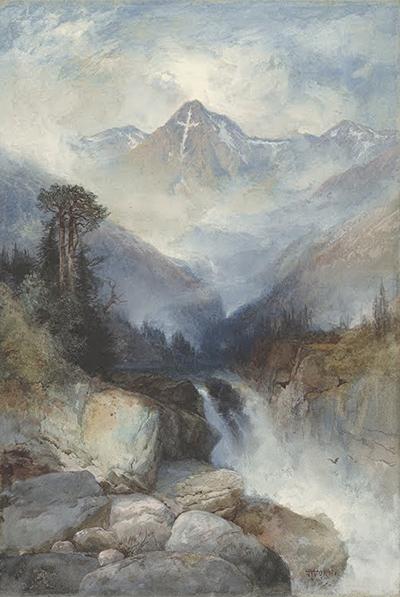Mountain of the Holy Cross painting was done in 1875. Moran embraces the style of religious romanticism. The art is associated with the Biblical allusion of Mount Sinai that was used by the Israelites.
The main aim of the painting was to draw the Americans closer to their religious realism. The painting was inspired by a photo taken by William Henry Jackson back in 1973. It depicted that the mountain existed, and as such, it called for the Americans to avoid taking it as folklore as the ancient generations had taken it. The artist applies the medium of watercolour, gouache, and graphite on a piece of paper. Additionally, he uses oil on canvas material. Additionally, this piece of work is currently situated in Autry Museum in United States America. The viewers interpreted the painting as a depiction of the expansion of the western part of the US.
The painting consists of mountains and the sky. One of the mountains has a cross on it. The cross is a clear indication that the place is holy, as it is likened to its significance in the Bible. This explains the reason behind the choice of the name of the painting. The mountains are symbolic as they embody the religious aspect of the supernatural being. In the past, it was believed that God resided in the mountains, and this was the basis of the piece of work. The other mountains are divided by a river that has stones, just like other typical rivers in the human environment. The river is embedded by other forms of vegetation and trees along its banks. Also, the rocks are demarcated in the painting in the river and in the base of the mountains. The sky appears to be clear on the mountain that has a cross on it.
Also, the sunlight can be observed in the mountains and the river, which shows that it is day time in according to the painting. The mountain peaks are covered with snow. Whereas they appear bright, the base seems dark and gloomy. The appearance is complemented by the pieces of tree trunks that appear to have been forced down the river. Moran’s viewed this piece of art as a nationalistic image that embraced Christianity in a natural environment. The artist was directly influenced to create this painting by Henry Wadsworth, a poet who wrote to his wife, who had died. He had titled his elegy as Across of Snow. Markedly, this further explains the basis of Moran’s title.




